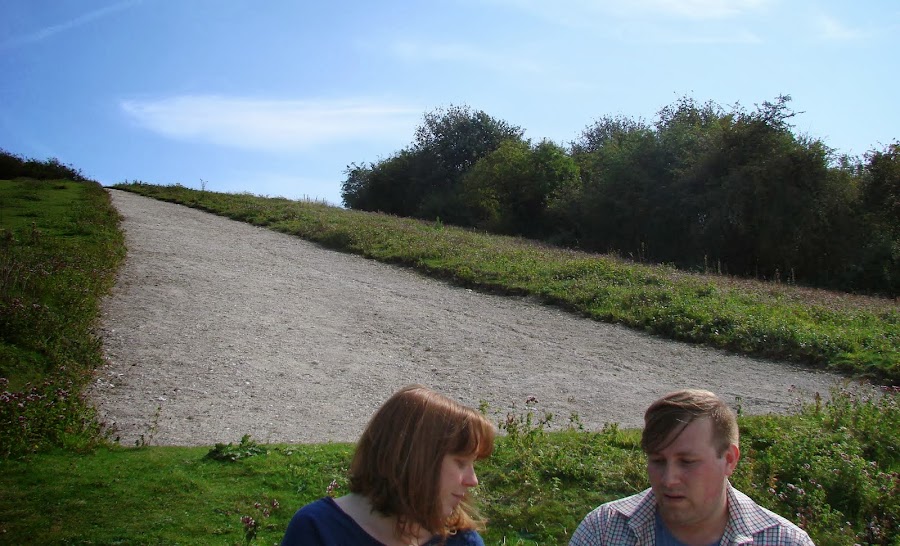Fine drizzle, 450 years later, Edgehill, a Cavalier mourned by his mother lies broken in Radway, stark outlines of Autumn, a neat new conservatory, PVC bright in the dark shadow, slugs, musket and canon, buried in the arable land, guarded by the MOD, waiting is strictly forbidden, ribbons and cards from last weekend's re-enactment moulder, pinned to the roadside pillar box, slam the gate, listen for the latch, grimacing pumpkins flicker burnt orange in the windows of the thatched and inaccessible, a golden carpet of fallen leaves, a pub on the hillside built into a folly of a castle with a dog, cat, beset son and lively landlord, the Parliamentarian helmet shines in the gloom of the stair, a new clock wound up, Rupert charging past the wild birds, guided through Graveground Coppice, freshly turned earth and pooling water, squaddies on patrol, an empty carpark of metal poles and a smashed headlight, no way out of Kineton, this road is closed, the ragged flag of Warwickshire, the ragged flag of England.
Wednesday 31 October 2012
Monday 15 October 2012
Branxton Concrete Menagerie
A few weeks ago Way Through went on holiday, and stayed in the fairly remote Northumberland village of Branxton, minutes from the Scottish border. Not only was there a field where the last monarch in the British Isles was slain (James IV at the Battle of Flodden, intriguingly documented in the only phonebox-turned-museum on record) but there was also a concrete menagerie.
Situated in the back garden of a modest semi-detached house in the middle of the village is a collection of 300 homemade concrete sculptures.
The menagerie was started in 1961 by James Beveridge who wanted to entertain his disabled son, Edwin. His designs were executed by a local retired joiner John Fairnington. Most of the figures are animals, but there are some people there, such as Winston Churchill, above. and T.E. Lawrence on his camel, below. There are also numerous plinths with inspirational text, many with an animal rights message.
The setting, particularly at sunset, was surprisingly affecting. The animals loom large above a view across fields. This was a strangely emotional place, arranged tenderly, but with a focused intent. This is a genuine piece of outsider art. The site has had a complicated legal history, but has been returned to the ownership of the creator's family. There is no charge to enter, but a collections box to help with the maintenance, which must be considerable.
Many of the statues are flaking and the stone tablets are worn, with their messages obscure. The peeling paint acts as a testament to one man's obsession with the bringing the world into his garden.
Situated in the back garden of a modest semi-detached house in the middle of the village is a collection of 300 homemade concrete sculptures.
The menagerie was started in 1961 by James Beveridge who wanted to entertain his disabled son, Edwin. His designs were executed by a local retired joiner John Fairnington. Most of the figures are animals, but there are some people there, such as Winston Churchill, above. and T.E. Lawrence on his camel, below. There are also numerous plinths with inspirational text, many with an animal rights message.
The setting, particularly at sunset, was surprisingly affecting. The animals loom large above a view across fields. This was a strangely emotional place, arranged tenderly, but with a focused intent. This is a genuine piece of outsider art. The site has had a complicated legal history, but has been returned to the ownership of the creator's family. There is no charge to enter, but a collections box to help with the maintenance, which must be considerable.
Many of the statues are flaking and the stone tablets are worn, with their messages obscure. The peeling paint acts as a testament to one man's obsession with the bringing the world into his garden.
Subscribe to:
Posts (Atom)




























